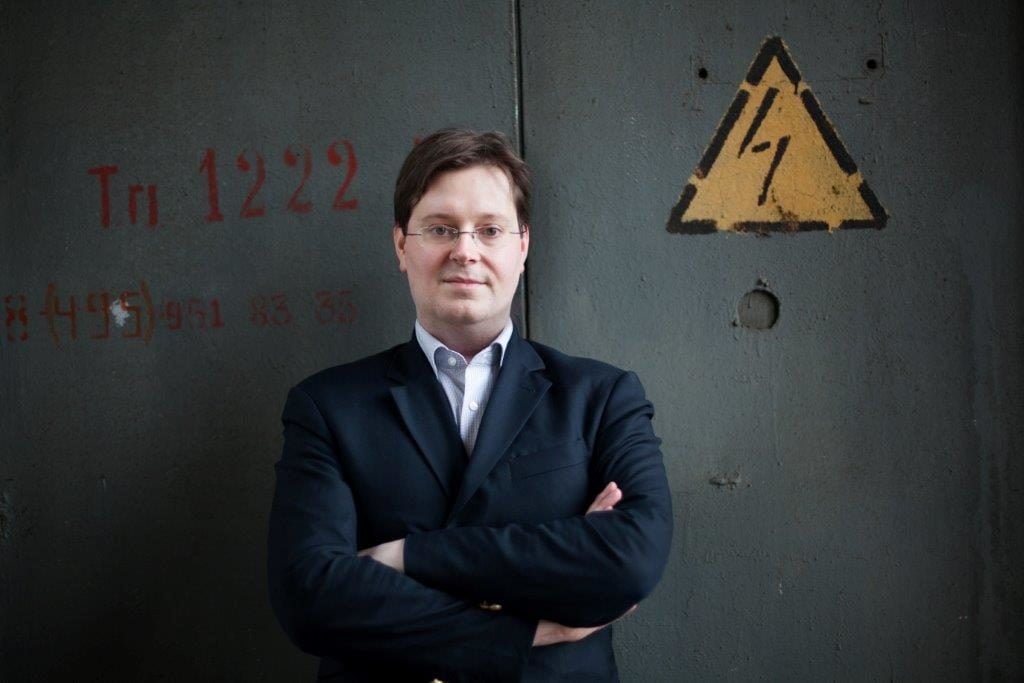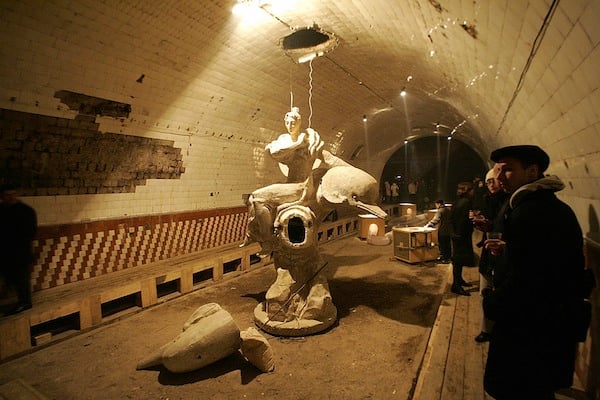Art World
The Little-Known Movers and Shakers of Moscow’s Exciting Contemporary Art Scene
Meet the institutions, collectors, and foundations doing exciting things for contemporary art in Moscow.

Meet the institutions, collectors, and foundations doing exciting things for contemporary art in Moscow.

Alyssa Buffenstein

Moscow is a sprawling city seemingly built for titans—giant Soviet apartment blocks tower over the eight-lane streets, and districts are so large that Muscovites can’t even speak to a general character of each, unlike the distinct neighborhood flavor of, say, New York’s Chelsea or Lower East Side, or the stark difference between Berlin’s Kreuzberg and Mitte. Moscow’s budding art scene seems spread out, but in reality a number of exciting young projects are all within the city center, despite taking ages sitting in traffic to get from one to another.
On the occasion of the Cosmoscow contemporary art fair, artnet News had the opportunity to get a taste of the art scene of Russia’s capital, beyond the private initiatives of Garage Museum and the V-A-C Foundation.
These are our favorite discoveries:

A 2007 exhibition in the wine cellar of the Winzavod complex in Moscow. Photo: MAXIM MARMUR/AFP/Getty Images.
1. WINZAVOD
Winzavod is a complex dedicated to contemporary art and culture. Nine galleries have spaces within the repurposed winery, among artist studios, cafes, and boutiques. A sprawling wine cellar lies beneath the complex, where exhibitions are sometimes staged; like the 2014 “One Place Next to Another,” with artists from Russia and Ukraine as well as Germany and Switzerland. These included Carsten Nicolai, Alicia Kwadje, and Ilya Dolgov.
The galleries, like 11.12, Osnova, Regina, and Triangle, have a contract with Winzavod to show at least 9 or 10 exhibitions per year. Alexander Sharov, founder of 11.12, told Cosmoscow’s VIPs that the concentration of galleries is reminiscent of gallery districts in other cities—like Berlin’s Potsdamer Strasse or London’s Mayfair. However, Winzavod is special in that it is an enclosed space with a large central courtyard, allowing gallery visitors to pop between openings without even having to cross a street.

Installation by Arnold Veber. Photo by artnet News.
2. SIMON MRAZ
The most exciting Muscovite collector at the moment is actually a transplant to the city. Simon Mraz (pictured above) is the director of the Austrian Cultural Forum in Moscow, and is an avid supporter of young Russian artists. A special exhibition of photographs and video work by the artist Arnold Veber, a recent graduate of the Rodchenko Art School, was staged in his apartment to coincide with Cosmoscow. His apartment is inside the House on the Embankment, a former soviet block where artists and KGB agents used to live—and apparently, there was a lot of blood spilled inside the building as a result of this mix.
Veber’s black and white photographs, curated by Antonina Baever, capture the youth of Moscow who “party like it’s their job,” looking to escape what Veber feels is the harsh reality of life in the city. A video displayed on three screens intersperses a dingy nightclub filled with dancers losing themselves to Gabber, a hardcore techno style, with a narrative text about an anonymous partier complaining about his mundane job, from which he eventually gets fired. The work evoked gritty party photos of raves in Berlin or London in the 1990s, but with a sense of impending doom informed by a violent history and volatile political situation.

Sergey Bratkov, Long Live the Bad of Today for the Good of Tomorrow (2010). Installation at the Multimedia Art Museum’s booth at Cosmoscow. Photo by artnet News.
3. MULTIMEDIA ART MUSEUM
Originally established as a museum for photography, the Multimedia Art Museum is a platform for, as its name suggests, multimedia art including photography and moving image. It is part of the Multimedia Complex of Actual Arts, which also includes the Moscow House of Photography and Rodchenko Art School.
Currently on at the museum is “Russian Space,” an exhibition pairing Russian avant-garde artists with the work of scientists, painting a picture of the utopian ideals of the Russian space movement. The museum claims to be the first institution to have introduced international art movements like Fluxus and Zero to the Russian public, and has also worked with international artists like Barbara Kruger, Ai Wei Wei, Tony Oursler, and more. The institution also had a booth at Cosmoscow, where they displayed, among others, works by the Electroboutique collective, a project by Alexei Shulgin and Aristarkh Chernyshev, two forerunners of Russian media art.

Yuri Albert, Yuri, You Are Not Lichtenstein, at the Ekaterina Cultural Foundation. Photo by artnet News.
4. EKATERINA CULTURAL FOUNDATION
Since the mid-90s, Ekaterina and Vladimir Semenikhin have been collecting exclusively contemporary Russian art, and in 2002, they established a foundation to display their collection. Besides collecting art, Vladimir is a businessman and philanthropist, and he and Ekaterina are both honorary consuls to the principality of Monaco.
Their current exhibition of works from 2000-2005, is organized by the galleries from which they bought the works, only some of which are still operating. Recurring themes of the works included criticisms of the USSR, like Vladimir Lenin rolling his cardboard grave—a video projection and installation from Vyacheslav Mizin and Alexander Shaburov’s Small Little Men series; or Sergey Bugaev-Afrika’s Flag #25, embroidered cartoons on a readymade USSR flag. Other works, like Vladimir Kozhukar’s Techno-Market #3, reminded of the fascination of foreign products after the dissolution of the Soviet Union. Russian space exploration was also a prominent theme, for example in Alexander Vinogradov and Vladimir Dubossarsky’s 2004 painting, Earth Wins, an imagining of a soccer game between humans and aliens. Dialogue between Russia and the rest of the world (or with outer space), was also cheekily explored by Yuri Albert’s copy of Roy Lichtenstein.